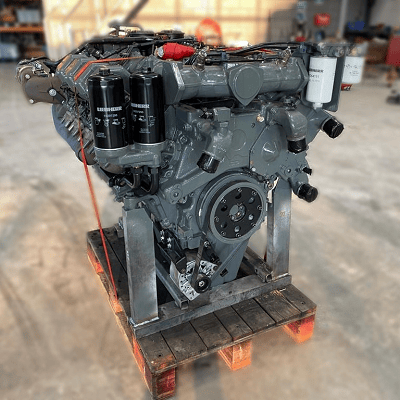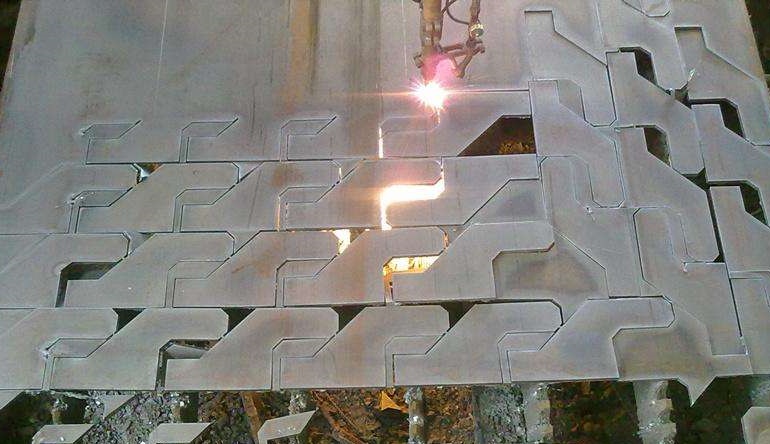The process of a dyno test on a Liebherr engine

When it comes to heavy machinery, reliability and power are paramount. Liebherr, a name synonymous with innovation and excellence in engineering, stands tall as a pioneer in the realm of heavy equipment and machinery. From towering cranes to robust excavators, Liebherr’s engineering prowess extends to the heart of these machines. We delve into the world of dyno testing a Liebherr engine, uncovering the meticulous process behind unleashing the raw power concealed within.
The foundation of excellence
Before we embark on the journey of dyno testing, it’s crucial to understand the foundation upon which Liebherr engines are built. With decades of engineering expertise and commitment to quality, Liebherr engines are crafted to withstand the most demanding environment and deliver unparalleled performance. Each component is meticulously designed and rigorously tested to ensure reliability, efficiency and longevity.
The process
1 Preparation: The engine undergoes meticulous preparation before being mounted onto the dynamo meter. This includes ensuring all connections are secure, fluids are filled to the appropriate levels, and sensors are properly calibrated.
2 Mounting: The engine is carefully mounted onto the dynamometer, a specialized device designed to simulate real-world operating conditions. Precision is paramount during this step to ensure accurate results.
3 Initial checks: Once mounted, a series of initial checks are conducted to verify proper alignment, connection integrity, and functionality of all engine systems.
4 Warm-up: The engine is started and allowed to warm up to operating temperature. This ensures consistent results and minimizes the risk of damage during testing.
5 Baseline testing: With the engine warmed up , baseline tests are conducted to establish initial performance metrics. This includes measuring power output, torque, fuel consumption, and emissions at various RPM levels.
6 Load testing: The engine is subjected to progressively increasing loads to simulate different operating conditions, such as idle, partial load and full load. This allows engineers to assess performance across the entire operating range and identify any potential issues or optimization.
7 Data analysis: Throughout the testing process, data is continuously collected and analyzed in real-time. Advanced instrumentation and software are used to monitor performance metrics and identify trends or anomalies.
8 Optimazation: Based on the data analysis, adjustments may be made to optimize engine performance. This could involve fine-tuning fuel injection timing, adjusting air-fuel ratios, or optimize turbocharger boost pressure.
9 Validation: Once testing is complete, the results are meticulously reviewed and validated against predetermined criteria and specifications. Any deviations or anomalies are thoroughly investigated to ensure accuracy and reliability.
10 Reporting: Finally, a comprehensive report is generated detailing the results of the dyno testing, including performance metrics, observations, and any recommendations for further optimization or refinement.
The outcome of dyno testing
Dyno testing a Liebherr engine is more than just a routine procedure – it’s a testament to the unwavering commitment to excellence that defines Liebherr’s engineering philosophy. By subjecting their engines to rigorous testing and analysis, Liebherr ensures that each engine delivers the uncompromising performance, reliability, and efficiency that customers expect.
In conclusion, dyno testing a Liebherr engine is not just about measuring power output. It’s about unlocking the true potential of these remarkable engines and ensuring they exceed expectations in the most challenging environments imaginable.
Product introduce:
In the machining process, the common methods of sheet cutting are manual cutting, semi-automatic cutting machine cutting and CNC cutting machine cutting. Manual cutting is flexible and convenient, but the quality of manual cutting is poor, the size error is large, the material waste is large, the subsequent processing workload is large, and the labor conditions are harsh and the production efficiency is low. Among the semi-automatic cutting machines, the profiling cutting machine has better quality of cutting workpieces. Because it uses a cutting die, it is not suitable for single piece, small batch and large workpiece cutting. Although other types of semi-automatic cutting machines reduce the labor intensity of workers, they have simple functions and are only suitable for cutting parts with relatively regular shapes. Compared with manual and semi-automatic cutting methods, CNC cutting can effectively improve the efficiency and quality of plate cutting, and reduce the labor intensity of operators. With the development of the modern machinery industry, the requirements for the work efficiency and product quality of plate cutting processing have also increased at the same time, so the market potential of CNC cutting machines is still very large, and the market prospects are relatively optimistic.

Working principle:
Usually, the CNC cutting system automatically processes the processed parts according to the pre-programmed processing program (the commonly used drawing software AUTOCAD). We put the machining process route of the part, process parameters, tool motion trajectory, displacement, cutting parameters (spindle revolutions, feed, back-feeding amount, etc.) and auxiliary functions (tool change, spindle forward rotation, reverse rotation, The cutting fluid is turned on and off, etc.), according to the instruction code and program format specified by the CNC cutting system, write a processing program list, and then record the content of the program list on the control medium (such as perforated paper tape, magnetic tape, disk, magnetic bubble, etc.). memory), and then input into the numerical control device of the numerical control machine tool, thereby directing the machine tool to process the parts.
This whole process from the analysis of the part drawing to the production of the control medium is called the compilation of the numerical control program. The difference between CNC cutting equipment and ordinary manual and semi-automatic cutting equipment in processing parts is that CNC cutting equipment automatically processes parts according to the program, while ordinary manual and semi-automatic cutting equipment needs to be operated by humans, we only need to change the control machine action. The program can achieve the purpose of machining different parts. Therefore, CNC cutting equipment is especially suitable for processing parts with small batches and complex shapes that require high precision!
Since the CNC cutting equipment needs to process parts according to the program, after the programmer has compiled the program, it is input into the CNC system to direct the machine tool work. Program input comes through the control medium. In this way, the CNC system is used to control the finished processing parts, and the graphics can be modified in time by the drawing staff, which can be used more freely, and the accuracy of the workpiece parts is also greatly improved compared with that of semi-automatic cutting equipment!
CNC cutting machine, flame cutting machine, oxygen cutting machine, gas cutting machine, plasma cutting machine
Wuxi Zhouxiang Complete Set of Welding Equipment Co., Ltd. , https://www.beamweldingmachine.com